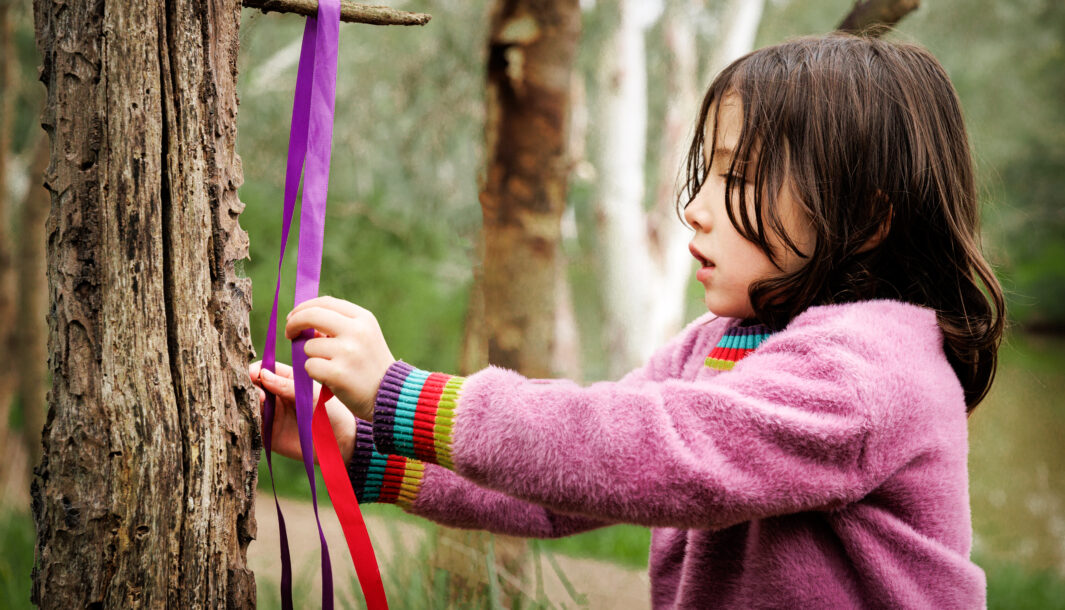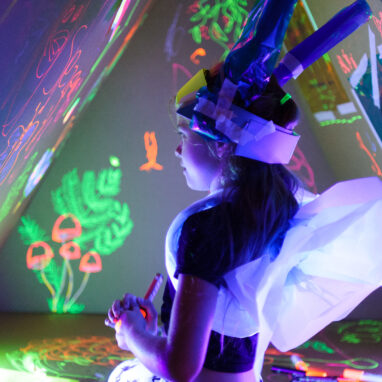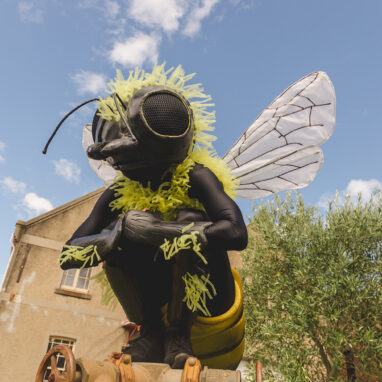February 17 - February 18 2024
Forest workshops at Royal Botanic Gardens Cranbourne
Children aged 4-9 and their adults are invited to help Polyglot Theatre make a brand new interactive show.

How does the forest call to you? Will you experiment, emerge or imagine?
Children aged 4-9 and their adults are invited to help Polyglot Theatre make a brand new interactive show – Forest.
In these participatory, outdoor workshops, children and their adults will collaborate with Polyglot artists to explore the connection we have to forests, and the creatures and characters within. Together we will rediscover the forests in the bushland at Royal Botanic Gardens Cranbourne, creating and playing in the wild spaces among the trees.
These workshops are part of an extended creative process, and will contribute to the final show.
Please note: the main entrance (eastern entrance) to Cranbourne Gardens is temporarily unavailable. Please use the western entrance on Ballarto Road. The western entrance is located HERE.
Venue, Session Times & Bookings
Venue
- Woodland Picnic Area, Wylies Creek Track
Royal Botanic Gardens Cranbourne
Ballarto Road and Botanic Drive
Cranbourne VIC 3977
Google Maps HERE - Please note: the main entrance (eastern entrance) to Cranbourne Gardens is temporarily unavailable. Please use the western entrance on Ballarto Road. The western entrance is located HERE.
Dates & Times
- Saturday 17 February: 10am-11am. 1.30pm-2.30pm
- Sunday 18 February: 10am-11am*, 2pm-3pm
- *Please note: the 10am session on Sun 18 Feb is being photographed. Families will be asked to sign a Polyglot and Royal Botanic Gardens Victoria release form on the day.
Bookings
- Book your FREE tickets here: eventbrite.com.au/e/forest-by-polyglot-theatre-tickets
- All booking information will be shared by Polyglot Theatre and Royal Botanic Gardens Victoria.
General Access
- These workshops will take place outdoors, in a forest area of Royal Botanic Gardens Cranbourne. We create and play with respect for the natural spaces we are in, and the plants, insects and animals who live there.
- Please check the weather, and dress appropriately. Please wear closed-toe shoes, and bring sunscreen, hats, raincoats and water bottles.
- There may be uneven ground surfaces, and unexpected weather conditions (sun, rain, wind).
- Please contact Polyglot Theatre on info@polyglot.org.au or 03 9826 3301 if you have specific access requirements or questions.
Forest
- Forest is part of Polyglot’s creative process to create a brand-new show for children and families. Here, children are experts and we follow their lead. Adult family members support their children to participate in the experience.
How to prepare
- When you come to a Polyglot workshop, we recommend you wear comfortable clothing that allows you to enjoy moving. Remember that you have come for an adventure and there are many ways to begin finding your play. You are curious and this space is yours. Just as you might at the beach, do you take your time and dip your toe in to warm up, or do you run and jump right in? The worlds we set up welcome you to take your time and find your own way to your imaginative play; and our performers are there to join you, or play alongside you, and look after these worlds and their inhabitants. See you soon!
Getting There
- For detailed information about getting to Royal Botanic Gardens Cranbourne, please visit rbg.vic.gov.au/cranbourne-gardens/getting-here
Royal Botanic Gardens Victoria
Royal Botanic Gardens Victoria plays a leading role in the conservation of plants through biodiversity research, programs to protect rare and threatened plants, and the study of habitats. This work is supported by education and visitor programs about the importance of plants to life.
Royal Botanic Gardens Cranbourne is made up of the Australian Garden, an award-winning, contemporary botanic garden, and the surrounding 300 hectares of remnant native bushland. Cranbourne Gardens is recognised as a site of State significance for plant and wildlife conservation, home to over 25 endangered or rare and threatened species.
Completed in October 2012, the Australian Garden was transformed from a sand mine and scrub to a botanic garden of international standing. Designed by Victorian landscape architects, T.C.L. the Australian Garden aims to show visitors the diversity, beauty and functionality of Australian native plants.













